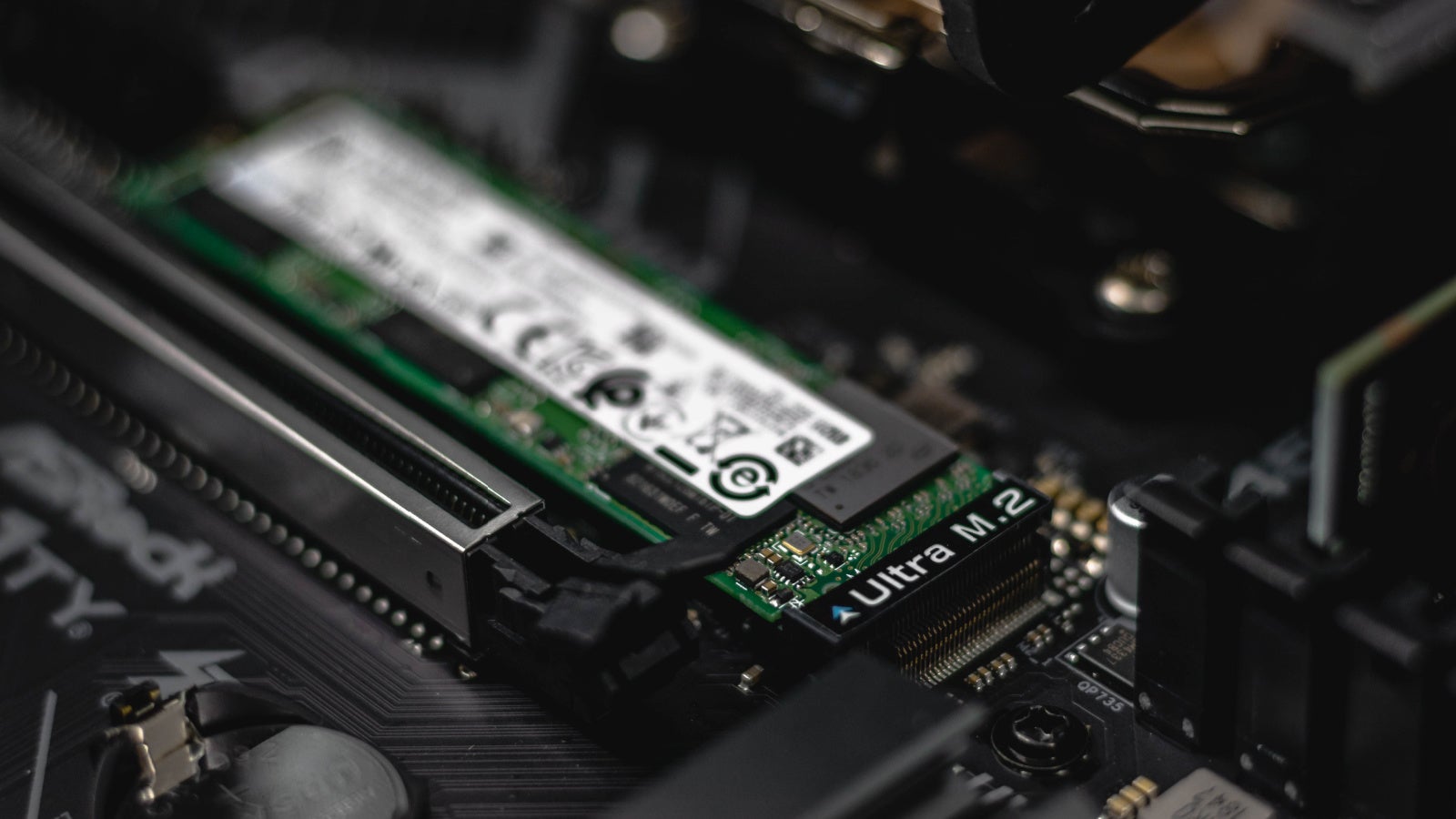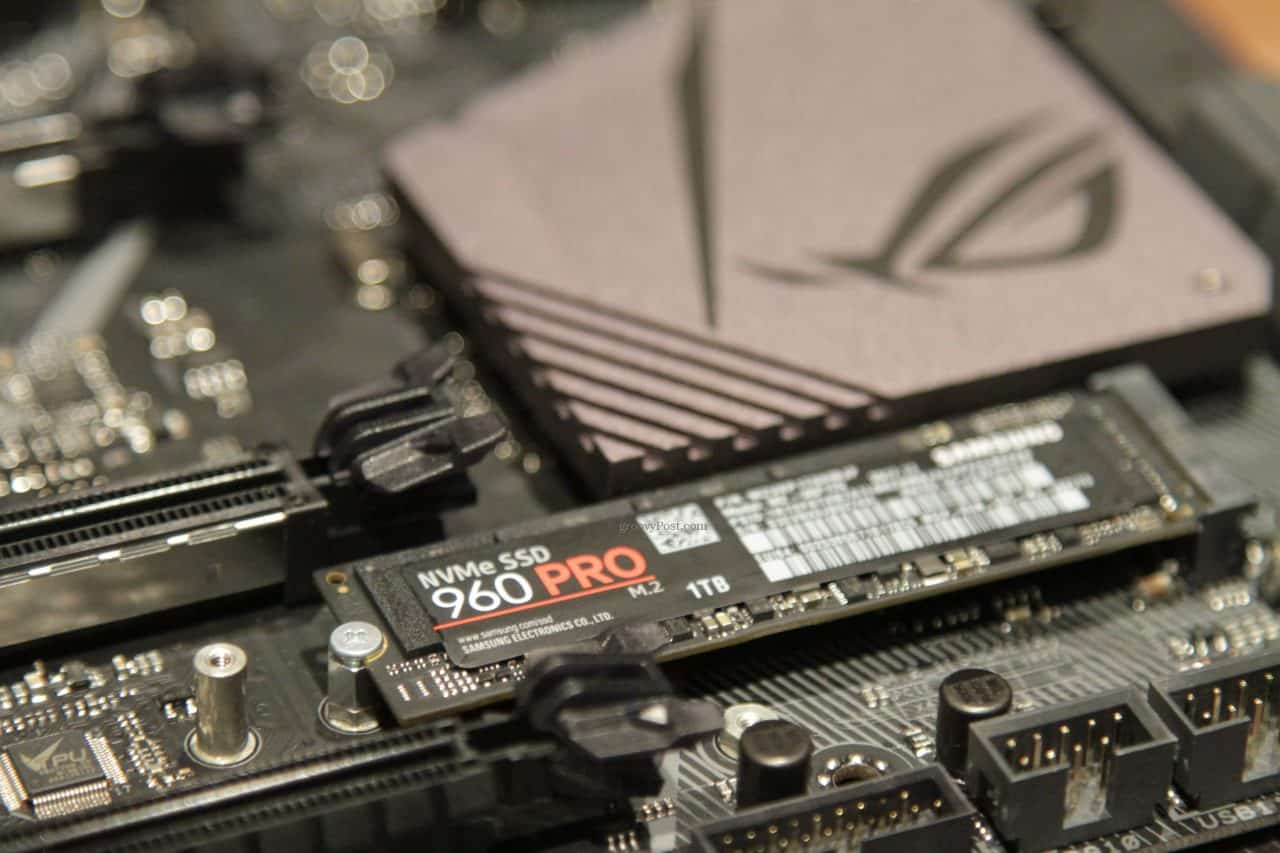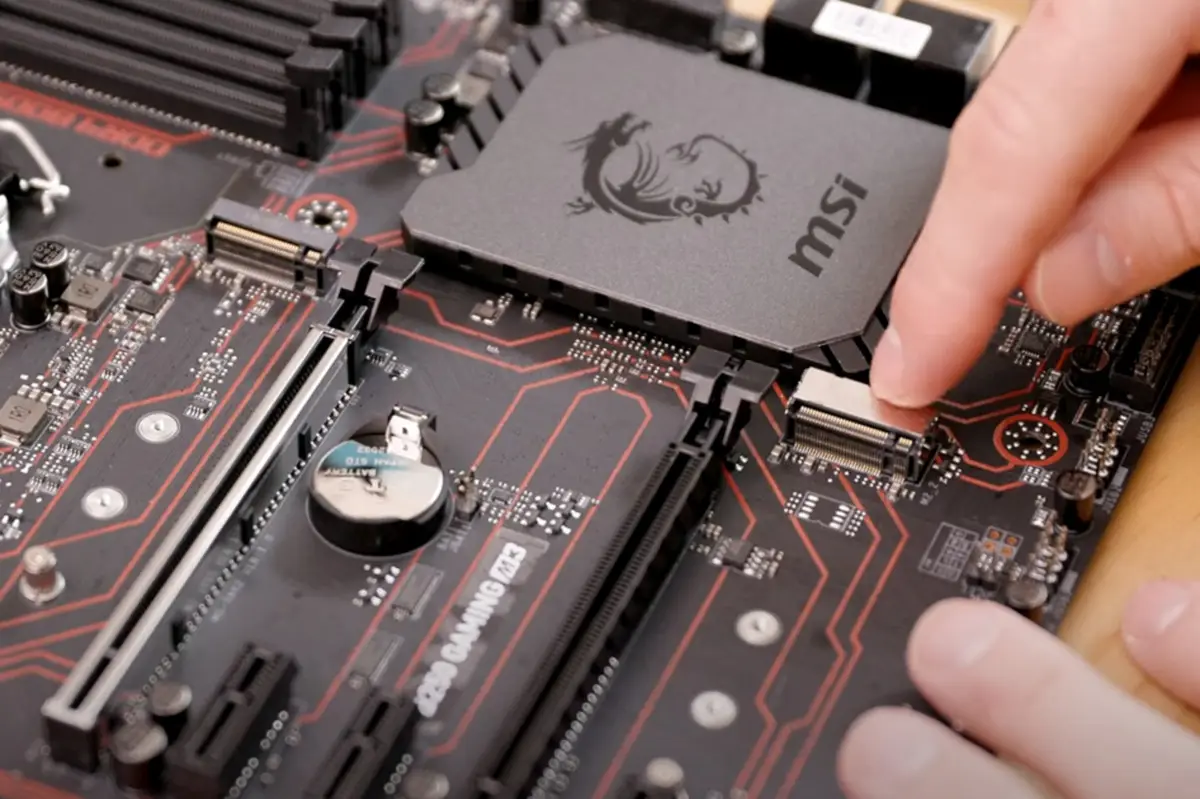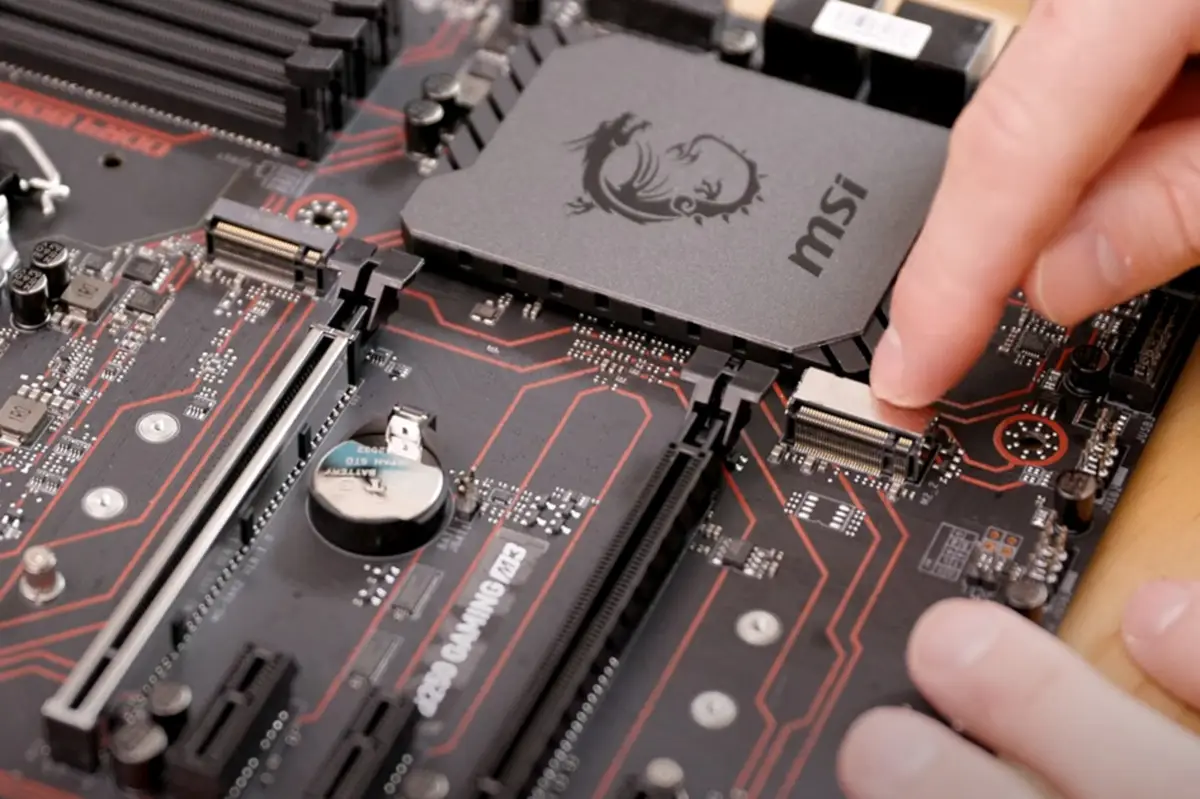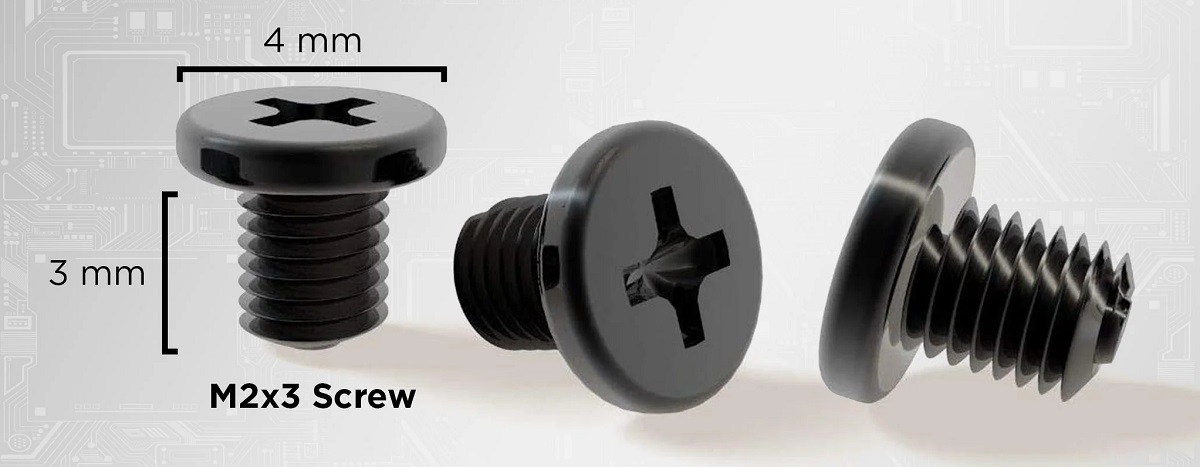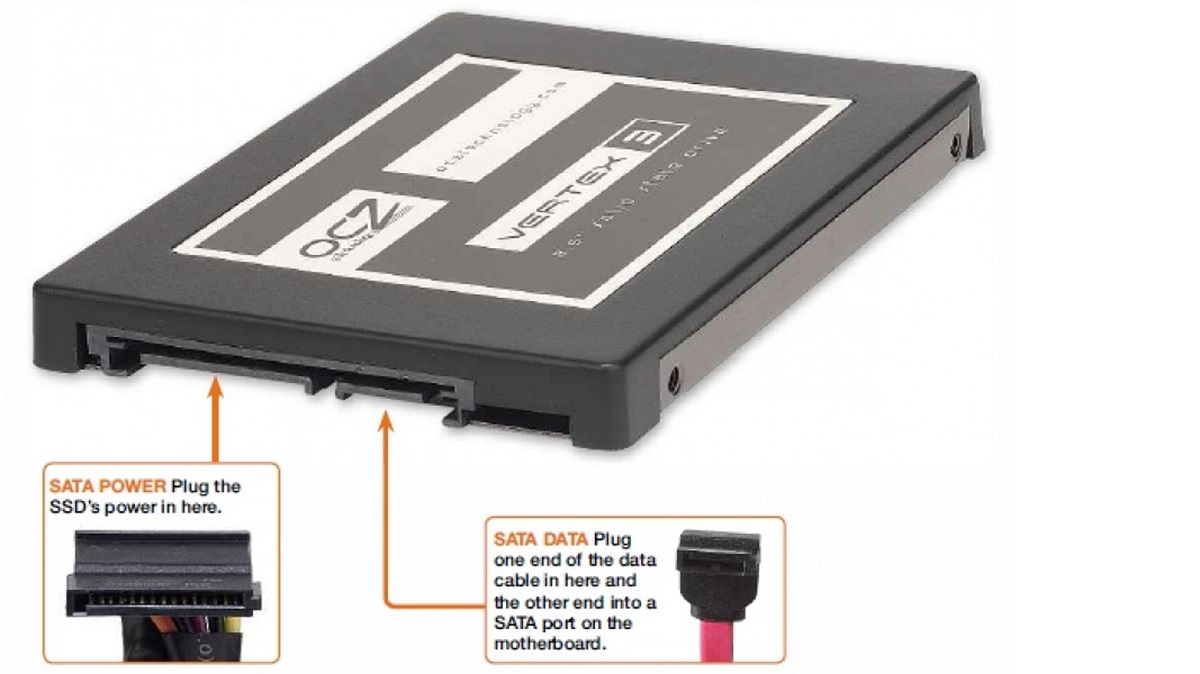Introduction
Choosing the right solid-state drive (SSD) for your motherboard is crucial for ensuring optimal performance and compatibility. With the myriad of SSD options available in the market, it can be overwhelming to determine if a particular SSD will work seamlessly with your motherboard. However, by understanding a few key factors, you can confidently identify the compatibility between your SSD and motherboard.
In this guide, we will explore the various factors that you should consider before purchasing an SSD for your motherboard. We will delve into interface compatibility, form factor compatibility, connector compatibility, BIOS compatibility, power supply compatibility, and operating system compatibility. By examining these aspects, you will be able to make an informed decision and avoid any potential compatibility issues that may arise.
Upgrading to an SSD can have a transformative effect on the overall performance of your system. SSDs offer faster read and write speeds, lower power consumption, and quieter operation compared to traditional hard drives. With their growing popularity and affordability, more and more users are opting for SSDs as their primary storage solution. However, ensuring compatibility with your motherboard is vital for a successful upgrade.
Throughout this guide, we will provide you with valuable insights and guidelines to help you determine if an SSD is compatible with your motherboard. Each section will outline specific compatibility factors and how to check them. By following these recommendations, you will be able to select an SSD that is not only compatible but also optimized for your motherboard’s capabilities.
Now, let’s dive into the key factors that you need to consider when assessing SSD compatibility with your motherboard.
Checking the Interface Compatibility
The interface compatibility between the SSD and the motherboard is one of the most important factors to consider. The interface determines how the SSD connects to the motherboard and influences the speed at which data can be transferred.
The most commonly used SSD interface is Serial ATA (SATA). SATA III is the latest version and offers a maximum transfer speed of 6 gigabits per second (Gbps). Before purchasing an SSD, you should ensure that your motherboard supports the SATA interface and is compatible with the version of SATA that the SSD utilizes. Most modern motherboards have at least one SATA III port, but it is always good to double-check the specifications of your motherboard to be certain.
In addition to SATA, there are also other interface options available, such as PCIe (Peripheral Component Interconnect Express). PCIe SSDs provide even faster data transfer speeds compared to SATA SSDs. However, not all motherboards have PCIe slots that are compatible with SSDs, so it is important to check the specifications of your motherboard to determine if it supports PCIe SSDs and which version of PCIe is supported.
To verify the interface compatibility, consult your motherboard’s manual or visit the manufacturer’s website to review the specifications. Additionally, you can check the product documentation of the SSD you are considering purchasing to confirm that it is compatible with the interface of your motherboard.
It is worth noting that some motherboards may have both SATA and PCIe slots, allowing you to choose between the two interfaces. This gives you flexibility in selecting the SSD that best suits your needs and budget.
Checking the interface compatibility is the first step in ensuring that your SSD will work seamlessly with your motherboard. By confirming that the SSD supports the appropriate interface and the motherboard has the necessary ports, you can proceed with confidence to the next step in assessing compatibility.
Checking the Form Factor Compatibility
The form factor of an SSD refers to its physical dimensions and shape. It is essential to ensure that the form factor of the SSD is compatible with your motherboard’s available slots and mounting options.
The most common form factors for SSDs are 2.5-inch and M.2. The 2.5-inch form factor is similar to traditional hard drives and is designed to fit into standard drive bays. These SSDs use SATA or SAS (Serial Attached SCSI) interfaces and are compatible with most motherboards.
On the other hand, M.2 is a more compact form factor that connects directly to the motherboard through an M.2 slot. M.2 SSDs offer faster speeds and come in different lengths, such as 2242, 2260, and 2280, which correspond to their respective dimensions. It is crucial to check the available M.2 slot on your motherboard and the supported lengths to ensure compatibility with the M.2 SSD you intend to purchase.
When examining form factor compatibility, it is also important to consider the drive bay type on your motherboard. Some motherboards may only have support for 2.5-inch drive bays, while others may have both 2.5-inch and M.2 slots. By checking the specifications of your motherboard or consulting the user manual, you can determine which form factors are compatible.
In the case of 2.5-inch SSDs, it is also essential to verify if the motherboard has the necessary power and data cables for connecting the SSD. Some motherboards may require an additional SATA cable or power supply connector.
In summary, ensure that the form factor of the SSD matches the available slots and mounting options on your motherboard. If you plan to use an M.2 SSD, check the available M.2 slot and the supported lengths. Similarly, for 2.5-inch SSDs, confirm that the motherboard has compatible drive bays and the necessary cables for connection. By verifying form factor compatibility, you can ensure that the SSD will fit properly and function as intended within your system.
Looking at the Connector Compatibility
Connector compatibility is another crucial aspect to consider when determining the compatibility between your SSD and motherboard. The connector type determines how the SSD connects to the motherboard and ensures a stable and reliable connection.
For SATA SSDs, the standard connector is the SATA data cable and power connector. These connectors are widely supported by motherboards and are usually included with the SSD or motherboard. When checking connector compatibility, ensure that your motherboard has the necessary SATA data ports and power connectors to accommodate the SSD you plan to install.
In the case of M.2 SSDs, they use different connectors depending on the interface they utilize. M.2 SATA SSDs typically use the B+M Key connector, while M.2 PCIe SSDs can use either the B Key or M Key connector. It is essential to check the available M.2 slots on your motherboard and ensure they are compatible with the connector type of the SSD you wish to install. The motherboard’s manual or specifications will provide details on the supported connector types for the M.2 slots.
It is also worth noting that some motherboards may come with additional proprietary connectors, such as U.2 or Thunderbolt, for connecting SSDs. If you plan to use an SSD with such connector types, ensure that your motherboard supports them.
By confirming the connector compatibility between the SSD and motherboard, you can guarantee a secure connection and avoid any potential issues during installation.
Checking the BIOS Compatibility
One often overlooked aspect of SSD compatibility is the compatibility with the system’s BIOS (Basic Input/Output System). The BIOS is responsible for initializing and controlling various hardware components, including storage devices. Therefore, it is crucial to ensure that the BIOS of your motherboard supports the SSD you plan to install.
To check BIOS compatibility, start by visiting the motherboard manufacturer’s website and checking for any available BIOS updates. Manufacturers frequently release BIOS updates that include support for new storage devices and other hardware. Updating the BIOS to the latest version can help ensure compatibility with the SSD you plan to install.
Additionally, check the motherboard’s manual or specifications to determine if there are any specific requirements or limitations for SSD compatibility. Some older motherboards may have limitations on the capacity or type of SSDs they can support. By reviewing the documentation, you can make an informed decision about the compatibility between the SSD and the motherboard’s BIOS.
It is important to note that updating the BIOS carries some risks, so it is advisable to proceed with caution. Ensure that you follow the manufacturer’s instructions carefully and avoid any interruptions or power outages during the updating process. If you are unfamiliar with updating the BIOS, it may be beneficial to seek assistance from a knowledgeable professional.
By checking the BIOS compatibility and updating it if necessary, you can ensure that the SSD is recognized and utilized optimally by your motherboard’s firmware. This compatibility step is crucial to avoid any potential problems during the boot process or when accessing the SSD from the operating system.
Determining the Power Supply Compatibility
Ensuring power supply compatibility is an important consideration when assessing the compatibility between your SSD and motherboard. The power supply provides the necessary electrical power for all the components in your system, including the SSD.
To determine power supply compatibility, first, check the power requirements of the SSD you plan to install. This information can usually be found in the SSD’s product documentation or on the manufacturer’s website. Pay attention to the power consumption, as it will determine the demands on your power supply.
Next, examine your power supply’s specifications. Check the available power connectors, specifically the SATA power connectors for SATA SSDs or the additional power connectors for PCIe SSDs. Ensure that your power supply has enough of the appropriate power connectors to accommodate the SSD. If your power supply does not have enough connectors, you may need to consider upgrading to a power supply that meets the necessary requirements.
It is also essential to consider the overall power capacity of your power supply. Upgrading to an SSD will increase the power demands on your system, albeit minimally compared to traditional hard drives. Ensure that your power supply has sufficient capacity to handle the overall power requirements of your system, including the added load from the SSD.
If you are unsure about your power supply’s capacity or compatibility, it is advisable to consult the manufacturer’s specifications or seek professional advice. An inadequate or incompatible power supply could result in instability or other issues with your system.
By confirming power supply compatibility, you can ensure that your SSD receives the necessary power to function optimally within your system. It is a crucial step in preventing power-related problems and ensuring the longevity and reliability of your SSD.
Verifying the Operating System Compatibility
Verifying the operating system compatibility is a critical step in ensuring that your SSD will work seamlessly with your computer. Different SSDs may have varying levels of compatibility with different operating systems, so it is essential to confirm compatibility before making a purchase.
Start by checking the SSD manufacturer’s website or product documentation to determine which operating systems are officially supported. Most SSDs are compatible with popular operating systems such as Windows, macOS, and Linux, but it is always best to verify the specific compatibility details.
In addition to official compatibility, it is also essential to consider any specific requirements or drivers needed for the SSD to function optimally on your chosen operating system. Check if there are any firmware updates or specific software utilities provided by the manufacturer to enhance performance or provide additional functionality.
If you are planning to install a fresh operating system on the SSD, ensure that the operating system installation media or download is compatible with the SSD. This includes ensuring that the installation media recognizes the SSD and has the necessary drivers to support it during installation.
Another aspect to consider is the file system compatibility. Different operating systems may use different file systems, such as NTFS for Windows or APFS for macOS. Ensure that the SSD is compatible with the file system used by your operating system to avoid any limitations or compatibility issues.
It is always recommended to keep your operating system up to date with the latest updates and patches, as these updates may include specific optimizations or support for new hardware, including SSDs. Regularly check for updates from your operating system provider to ensure the best compatibility and performance.
By verifying the compatibility of the SSD with your operating system before making a purchase, you can avoid potential issues and ensure a smooth installation and usage experience. This step is essential in maximizing the performance and functionality of your SSD within your specific operating system environment.
Conclusion
Ensuring compatibility between your solid-state drive (SSD) and motherboard is crucial for optimal performance and a seamless user experience. By considering factors such as interface compatibility, form factor compatibility, connector compatibility, BIOS compatibility, power supply compatibility, and operating system compatibility, you can confidently select an SSD that will work harmoniously with your motherboard.
Checking interface compatibility is the first step, ensuring that the SSD and motherboard support the same interface, such as SATA or PCIe. Verifying form factor compatibility is essential to ensure that the physical dimensions of the SSD will fit into the available slots and mounting options on your motherboard.
Connector compatibility ensures a stable and reliable connection between the SSD and the motherboard. Checking the compatibility of connectors, such as SATA data cables and power connectors or M.2 key types, will ensure a proper connection and functionality.
Confirming BIOS compatibility ensures that the firmware of your motherboard supports the SSD you plan to install. Keeping the BIOS updated and checking for any specific requirements or limitations will help avoid booting or recognition issues.
Determining power supply compatibility ensures that your power supply can handle the power demands of the SSD. Checking the power requirements of the SSD and the available power connectors on your power supply is crucial to provide sufficient power for the SSD.
Lastly, verifying the operating system compatibility ensures that the SSD is officially supported by your chosen operating system and that any necessary drivers or updates are available for optimal performance. Checking file system compatibility is also important to prevent any limitations or compatibility issues.
By considering these factors and verifying compatibility, you can confidently select an SSD that is optimized for your motherboard, enhancing your system’s performance and storage capabilities. So, take the time to research and ensure compatibility before making your SSD purchase, and enjoy the benefits of a seamless and efficient storage solution.










